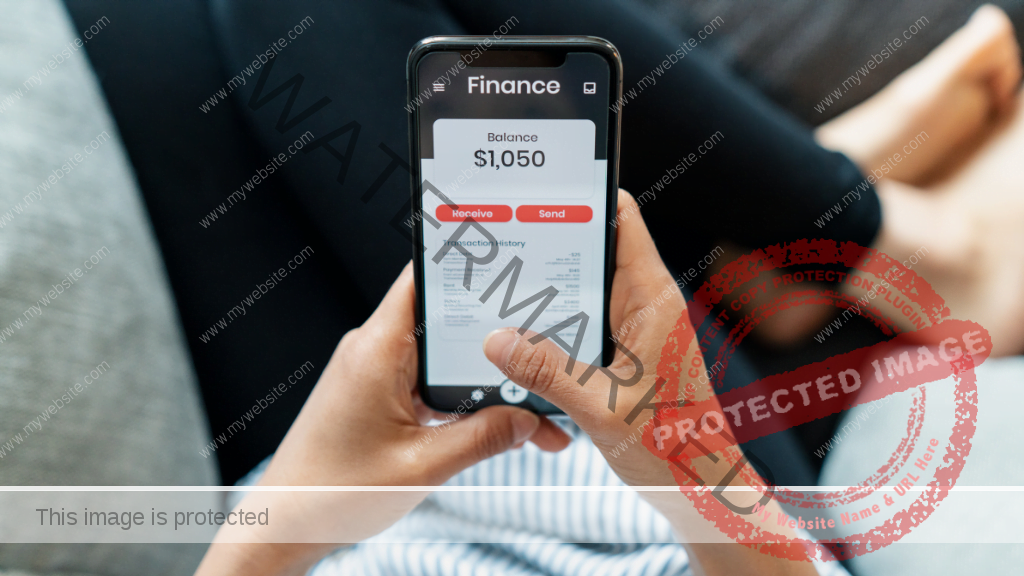
Mobile App For Financial Services Industry – OTS Solutions
The financial services industry has changed a lot in the last few years due to innovations in mobile and digital apps and modern technology has made it easier for individuals to invest and borrow money. The technology also makes it easier for banks to process transactions and manage their operations. This blog will examine how mobile app for financial services.
Mobile banking apps are bound to become the most important channel for bank customers to access banking services.
A recent report published by Google and Oxford Economics reveals some startling latest trends and facts transforming the financial services industry. Digital payments via mobile have already overtaken cash and card transactions. The future of the financial services industry is now digital, mobile, and data-driven.
What makes people use mobile banking and finance apps?
People switch to mobile banking apps because they are easy to use for basic banking tasks.
Statista says that 90% of US users use mobile banking apps to check their account balances, 79% to see their recent transactions, 59% to pay bills, and 57% to make transfers. They used to do these things through online banking, but now increased people are switching to apps.
Another wonderful thing about mobile banking apps, which are also available through web banking, is that you can use them anytime and anywhere. We are no longer limited by when banks are open and where their branches and ATMs are. You can do everything you need to do with your bank right away.
New competitors that banks must deal with are also a big reason for the mobile banking revolution. Several companies are focused on mobile-only operations. Accounts are created, managed, and money is sent between accounts and other users only through their apps.
Companies like Revolut which are young, active, and outspoken attract younger people who are used to doing as much as they can on their phones. They do not understand why people go to branches. Because of this, banks need to join the mobile revolution. If they do not, they will lose business from younger people.
Is there a security issue with mobile banking and finance apps?
The short answer is not that much, at least from the point of view of a user. According to a study by Accenture, only 28% of bank customers think that mobile and online banking are not safe. Security used to be a bigger deal for mobile banking app development, but now with the vast knowledge, it has changed. Still, security should be a top priority for every company that makes mobile banking apps.
Other apps do not have to spend as much time and money on security and can instead focus on making beautiful designs and interesting features. Users of banking apps expect security to be the most important part of the experience. They want to know that their money is safe.
Customers can be encouraged to be safe because a mobile app for financial services is the most secure way to do banking. Biometric login and two-factor authentication are now market standards.
What are the advantages of banking and finance mobile apps?
Better security:
Cybercrimes are, without a doubt, a big problem, but banks can make sure they are safe by using mobile app development. A mobile app for financial services is safer than online banking because it has more hardware security options. Biometric authentication is one of the best things about mobile devices.
Lowering Operational Expenses:
Banks’ operational costs can be cut by making mobile banking apps and promoting them as the main way to do banking. Banks can do away with paper with the help of mobile apps, which saves time, money, and natural resources. It is also a way to save money on branch operations and maintenance costs. Lastly, transactions through mobile apps are ten times cheaper than transactions through ATMs.
Added Revenue Streams:
A study by Fiserv found that mobile banking apps can affect customer engagement and return on investment in many ways. Financial institutions can make more money by adding extra services, like retail deals or travel insurance to their apps. Customers who only use bank branches do not use as many products or do as much banking as customers who use mobile apps. Also, they are more loyal to a brand if the mobile experience is good.
Increase Business:
Apps also ensure that businesses in the financial sector get as much business as possible. Mobile applications have ensured that the business gets the biggest market share and makes more money by making the business easier to get to. Mobile apps have strengthened the relationship between the business and its existing customers by making transactions safe and easy. This keeps people coming back and keeps people working.
Improved Customer Service:
By making a mobile app that is both useful and well-made, banks can improve their customer’s overall experience. Customers can always use mobile banking apps because they are always available and easy to get to. Customers can take care of their banking needs whenever and wherever they want. When you use a mobile banking app, you have many more ways to customize the products and services than when you only use a branch or the Internet.
Services available 24 ×7:
The most important thing for banks is to help their customers as much as possible and make money from it. With a traditional banking system (i.e., offline banking), it was impossible to provide good services, especially when there were a lot of customers. But now that technology is improving, and more people have smartphones, the services can be made digitally available to customers. No matter how far away your bank branch is, you can use major banking services online with the tap of a finger with mobile banking apps.
Faster and less likely to make mistakes:
It is a fact that banks have become much more efficient since they started using digital ecosystems like online banking through websites or mobile banking apps. Compared to the modern banking system, the older one’s biggest problem is that people make mistakes, which causes banks to lose money. Because of this, banks now have more efficient workers who make fewer mistakes.
The Potential of Mobile Analytics:
Mobile banking apps are a wonderful way for banks to collect and analyze many diverse types of data and get important customer feedback. They can learn more about their customer’s habits and needs, which is extremely helpful for making new products. Information and feedback gathered through mobile apps can help a lot to make the customer experience better as a whole.
Improved communication through push and in-app notifications
Mobile apps are a wonderful way for the bank and the customer to talk to each other. Push and in-app notifications can make customers do certain things and improve their feelings about the brand (when used properly). From a bank’s point of view, they should also be used to share valuable information. Customers are more likely to pay attention to notice than to read a long letter or email.
How can financial apps help you to grow your business?
People have always looked down on the phrase “banker’s hours.” Mobile app for financial services was hard to get for a long time. This meant that customers had to go to a branch or a broker’s office, which took time and energy. The future of the business is in mobile banking apps. The new norm is to make mobile apps easy and safe for people to connect with their finances. People will buy from businesses that take advantage of this trend.
Make mobile banking apps to serve an underbanked population:
Most Americans do not have enough money in the bank. This might be hard to believe. Even a simple checking account is out of reach for these underserved areas. People who are already struggling to make ends meet face many extra costs because of this hole in our financial system. But mobile can remove many of the old barriers that made it hard for banks to serve new customers. The Federal Reserve study found that the number of underbanked people with smartphones was the same as the number of fully banked people with smartphones. Consumers were more likely to use their phones than to go to a branch to check their finances.
Building mobile banking apps can cut costs and increase profits
The good news keeps coming for banks that turn their branch customers into mobile banking customers. Customers are more loyal, more engaged, and more willing to share information, and they dramatically increase overall margins. A Javelin Strategy & Research study found that a mobile banking transaction costs banks only $0.10 on average, while a transaction at a physical branch costs $4.25.
These savings are a huge opportunity for banks willing to put up the money upfront. The most interested customers are the ones who are worth the most.
Financial services will soon be done on mobile devices.
Every part of people’s lives has changed because of mobile. It should not be surprising that this also affects how we manage our money. It would be a mistake to fit current fintech trends into the larger cultural shift caused by smartphones. In the 20th century, the mobile app for financial services did not change much, but now it is going through a change that will change it forever.
Because of this, the financial services industry could enter a golden age. A golden age that brought many new services, goods, and customers.
Read more: Digital Transformation: A Comprehensive Guide for any Business
There will be more change
FinTech Application Development changed the banking and finance industry in many ways. Digital financial services are now in every field: Investing and taking care of money, Lending/Loan, Trading, Personal Banking, and InsurTech.
FinTech has the potential to change the way businesses work by using technologies and following trends, such as building better relationships between merchants and customers and doing anything that will solve the problem of financial inclusion. With Blockchain, Big Data, AI (Artificial Intelligence), ML (Machine Learning), and many other innovative technologies, business leaders are advised to incorporate Fintech culture into their business models. It will be the full-fledged future of the Banking and Financial Industry and the face of modernization.
The financial industry may be one of the areas where the digital revolution has had the most impact. Every part of finance has changed, from digital banking to complex systems that track and analyze our financial health and well-being. One thing is for sure: the business’s technology will keep improving. There will be more changes coming.
Conclusion
As the world of mobile and digital apps continues to grow, we have seen a change in the financial services industry. We are excited to see how the financial services industry will continue to grow, especially in the mobile and digital apps world. You can contact us if you want more information on digital apps for the financial service industry and how they are changing the financial services industry.
The post How Have Mobile And Digital Apps Changed The Financial Services Industry? appeared first on OTS Solutions.
Atoms Lanka Solutions








0 comments
Write a comment